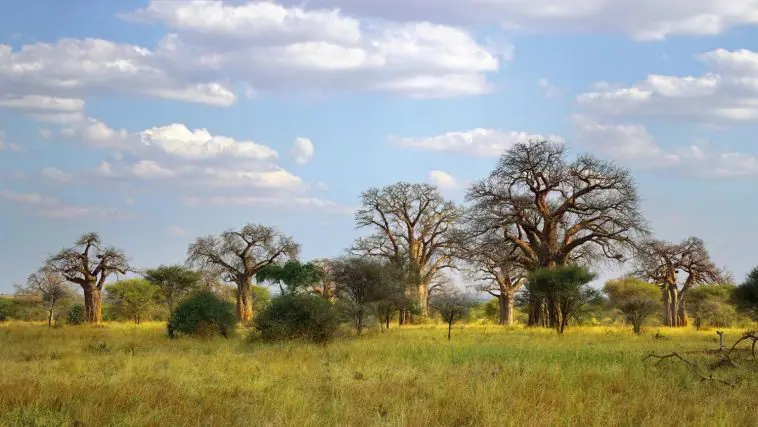The African Baobab is a large, deciduous tree known for its massive trunk and odd branches. Its extraordinary design allows the baobab to survive throughout the dry areas of Africa, from South Africa to Sudan, as well as Madagascar and northwest Australia.
The African baobab grows in areas with moderate summer rainfall and dry winters. It is a deciduous tree and will shed its leaves at the beginning of winter to conserve moisture. This tree will grow to 75 feet high with an equal spread.
The odd outline of the leafless winter tree has an interesting African legend, which states that the Great Spirit who made the world gave a tree to each species of animal. The baobab was given to the hyena, who was so disgusted by its appearance that it threw the tree away. It landed upside down and has grown that way ever since, with roots replacing its branches.
God created this tree with an impressive survival feature: the massive water-storing trunk. One tree has been measured to have a girth of 94 feet. A single baobab trunk can hold up to 1,426 gallons of water, making the tree’s mass 80 percent liquid.
The African baobab tree gathers water by using its roots to bring in as much water as it can during the summer rains. This root system is vast enough to extend deep into the ground to tap into underground water sources. Not only does this tree store water in its trunk but also in its roots and the part of the branches closest to the main trunk. This stored water is essential if it is going to produce new leaves the following spring.
In early summer, green flower buds develop on long drooping stalks. The buds blossom into white flowers that emit a sweet smell that opens in late afternoon and attracts fruit and nectar feeding bats that carry pollen on their backs from flower to flower, ensuring good pollination. By the following evening, these flowers have already wilted and turned brown.
The fruit takes 5 to 6 months to develop into green, egg-shaped capsules 12 inches long and covered in yellowish hairs. Inside the fruit are brown seeds in a white pulp that is sweet and nutritious to eat. Locals eat the nutritious pulp that is rich in vitamin C, vitamins B1(thiamine) and B9(folic acid), calcium, potassium, magnesium, and iron.
The fruit pulp can be eaten raw, mixed into oatmeal, or soaked in water to make a sweet-tasting drink. The seeds are used in soups or roasted as a good substitute for coffee. Fibers from the bark are often used to make ropes, floor tiles, or baskets. Older trees are often hollowed out and used as houses and stables.
God created the African baobab tree to not only survive, but to thrive in the harsh African semi-deserts, providing his people with rich food and supplies.
For thou, O Lord, hast made me glad by thy work; at the works of thy hands I sing for joy. How great are thy works, O Lord! Thy thoughts are very deep! Psalms 92:4–5






